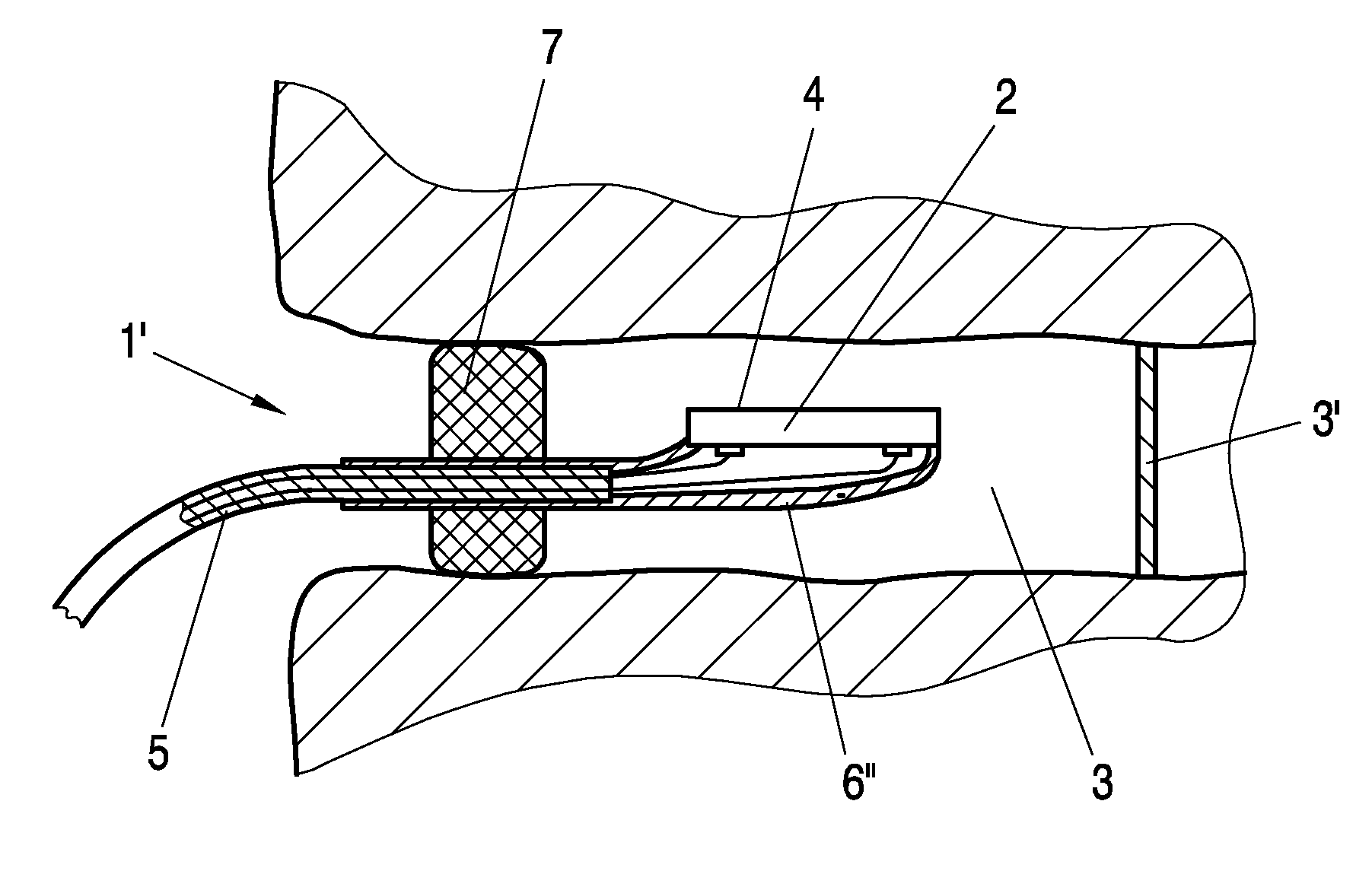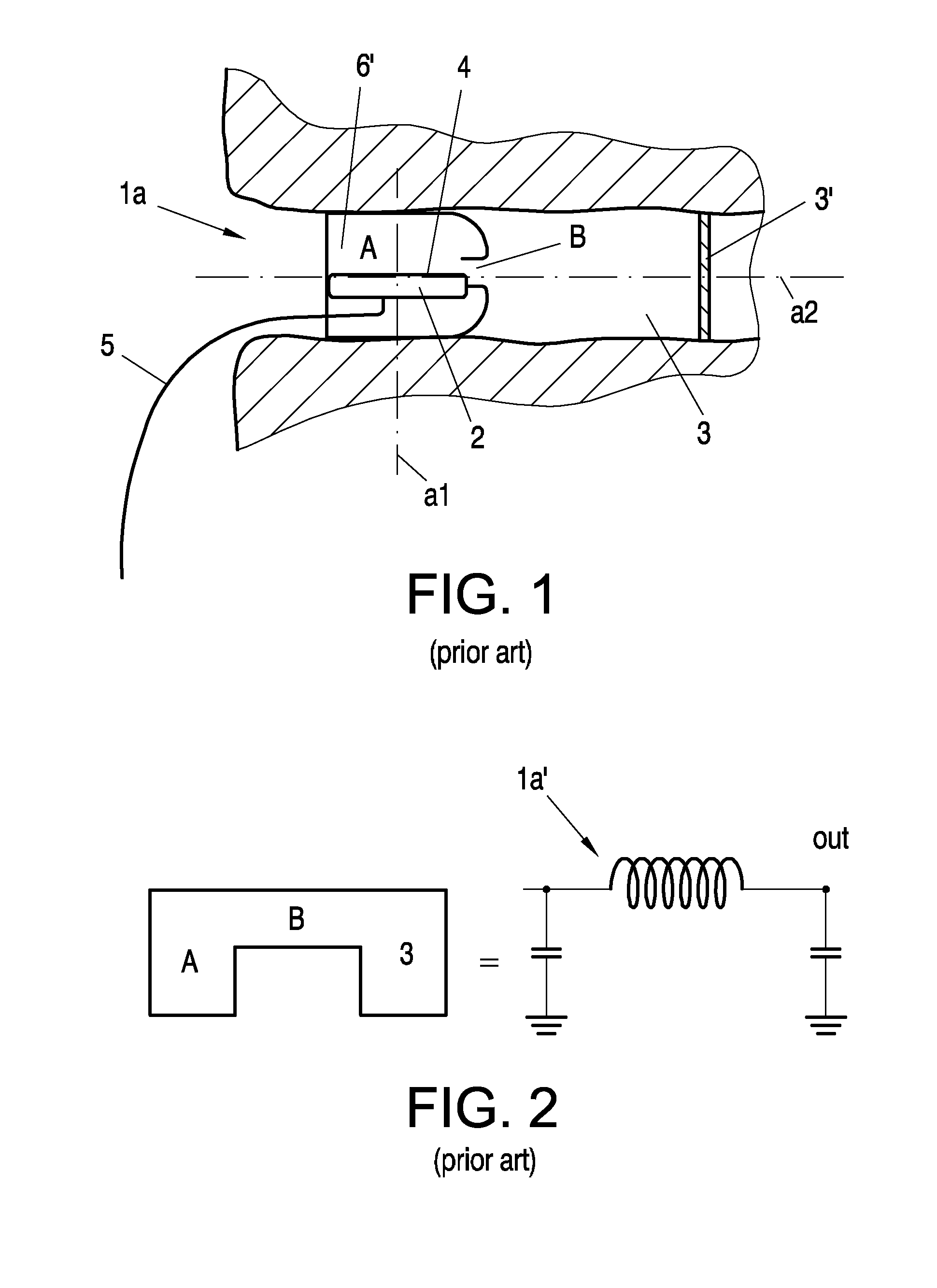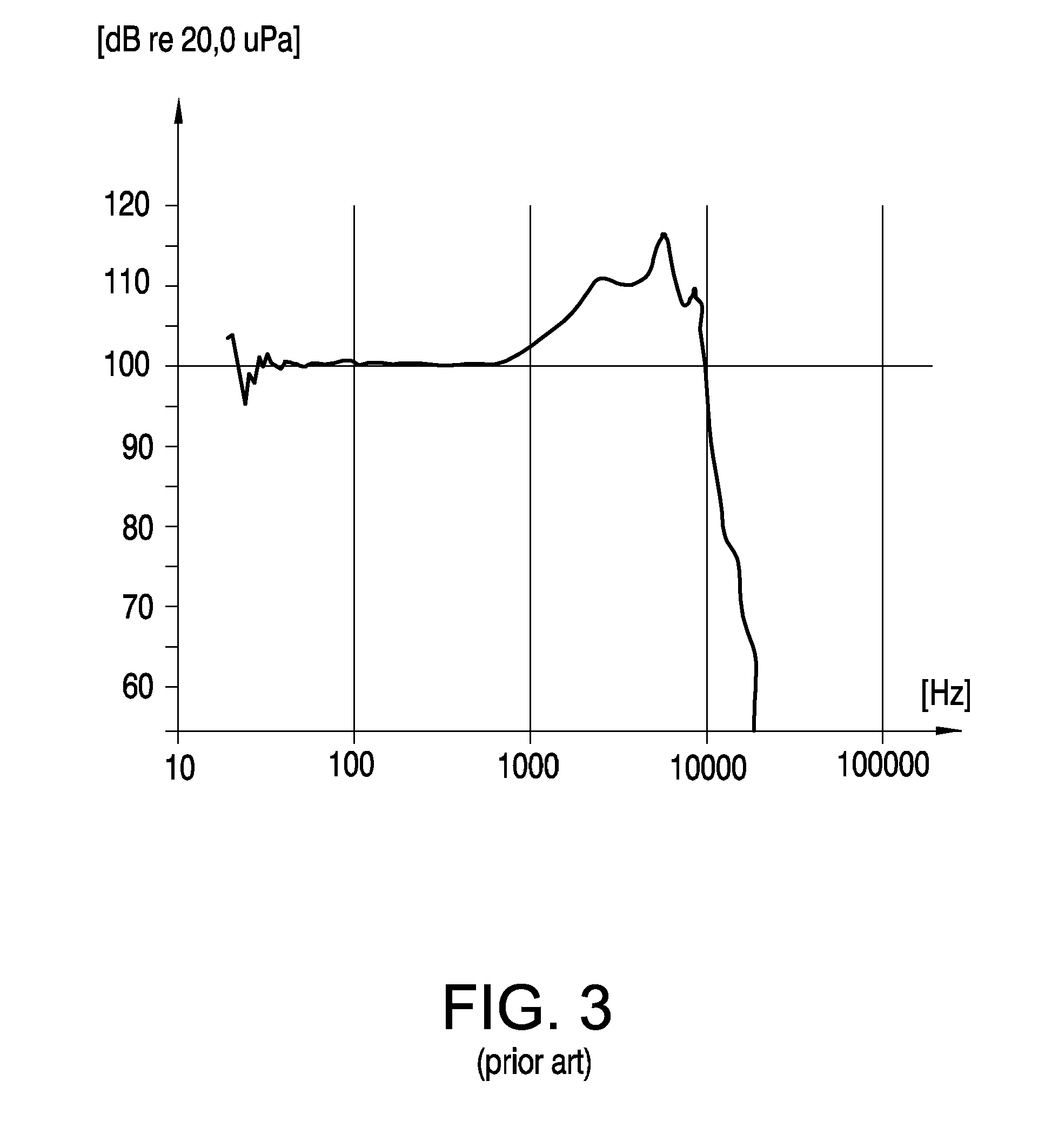In-Ear Phone
a technology for in-ear phones and phones, applied in the field of in-ear phones, can solve the problems of not being able to reproduce frequencies higher than 10000 hz very well, and achieve the effect of inhibiting external noise and disturbances, high frequency, and high quality reproduction
- Summary
- Abstract
- Description
- Claims
- Application Information
AI Technical Summary
Benefits of technology
Problems solved by technology
Method used
Image
Examples
Embodiment Construction
[0025]FIG. 4 shows an in-ear phone 1 according to the invention. The in-ear phone 1 comprises a speaker driver 2. The speaker driver 2 is of an oval form and disk-shaped. Alternatively, the speaker driver 2 may be of a rectangular or a square shape as well. The speaker driver 2 can be inserted into an auditory canal 3 of a user's ear. When the in-ear phone 1 is positioned in its operating position within the auditory canal 3, the direction of the axis a1 of the speaker driver 2 is substantially perpendicular to the direction of a longitudinal axis a2 of the auditory canal 3. This means that the plane of the sound emanating area 4 is substantially parallel to the axis a2 of the auditory canal 3.
[0026]According to a preferred embodiment of the invention the area of the sound emanating area 4 is larger than the area of a cross section of the auditory canal 3, which cross section is essentially parallel to the eardrum 3′. The measures mentioned in this paragraph achieve the advantage of...
PUM
 Login to View More
Login to View More Abstract
Description
Claims
Application Information
 Login to View More
Login to View More - R&D
- Intellectual Property
- Life Sciences
- Materials
- Tech Scout
- Unparalleled Data Quality
- Higher Quality Content
- 60% Fewer Hallucinations
Browse by: Latest US Patents, China's latest patents, Technical Efficacy Thesaurus, Application Domain, Technology Topic, Popular Technical Reports.
© 2025 PatSnap. All rights reserved.Legal|Privacy policy|Modern Slavery Act Transparency Statement|Sitemap|About US| Contact US: help@patsnap.com



